Physics Classes
From fundamental quantities to Motion, the Physics classes are designed to fit any need—all taught by highly-vetted expert instructors.

Units, Measurements & Scalars and Vectors (PHY1)
Total # of live classes: 9
Fundamental quantities are the basic units upon which other units depend. There are several quantities that can be measured against acceptable standards

Motion (PHY2)
Total # of live classes: 9
Motion is a change with time of the position of a body. There are different types of motion. Gravity is an important phenomenon that plays a key role in how motion is made on the Earth

Projectiles (PHY3)
Total # of live classes: 9
Projectile refers to an object that is in flight after being thrown or projected. Most base balls, footballs or basketballs are good examples of objects that perform projectile motion when thrown.

Mechanical Work, Energy and Power (PHY4)
Total # of live classes: 9
Energy is the capacity to do work. Work is done when a force applied to an object moves that object. Power is the rate at which work is done. There are various sources of energy that enable work to be done.

Heat Energy (PHY5)
Total # of live classes: 10
Heat is a form of energy transferred from one body at a higher temperature to a lower temperature. Temperature in the degree of hotness or coldness of a body.

Static Electric Charges (PHY6)
Total # of live classes: 11
Electric charge is a physical property of matter that causes it to experience a force when placed in and electric or magnetic field. Charges can be positive or negative.

Description of Properties of Fields: Gravitational
Total # of live classes: 9
Gravitational field is a region around a mass in which the gravitational force of the mass can be felt.

Wave: Reflection of Light Waves (PHY8)
Total # of live classes: 9
A wave motion is a process of transferring a disturbance from one point to another in a medium without any transfer of the particles of the medium. Light is a form of energy that causes sensation of vision, which enables us to see.

Nigerian Satellites, Rockets and Satellites (PHY9)
Total # of live classes: 9
Rockets and Satellites are exciting technological advances of the modern world. A Rocket is an engine that produces a great power, more power for its size than any other kind of engine.
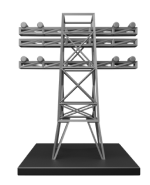
Dynamic Electricity and Electric Field II: Current Electricity (PHY10)
Total # of live classes: 9
Electric Current is the rate of flow of electric charge along a conductor. The potential difference between two points in an electric field is defined as the work done in moving a positive charge of 1Coulomb from one point in an electric field to another.

Particle Nature of Matter, Crystal Structure of Fluids & Models of Atom (PHY11)
Total # of live classes: 9
An atom consists of a central massive nucleus surrounded by light electrons moving in orbits around the nucleus. The nucleus itself consists of protons and neutrons.
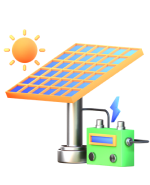
Basic Electronics & Harvesting of Solar Energy (PHY12)
Total # of live classes: 9
Semiconductors are crystalline solids whose electrical conductivity is between that of a conductor and a n insulator. They are used in the manufacture of electronic devices like diodes, transistors, circuits, etc.

Equilibrium of Forces (PHY13)
Total # of live classes: 9
A force is a vector quantity with both magnitude and direction. A number of forces can act on an object at the same time. Equilibrium of forces describes the state of forces where the size and direction of forces acting on an object is balanced.

Simple Harmonic Motion (PHY14)
Total # of live classes: 9
Simple harmonic motion has its acceleration always directed towards a fixed point and directly proportional to the distance of the particle from the fixed point.

Linear Momentum (PHY15)
Total # of live classes: 9
Momentum helps to measure the mass of moving objects. Momentum (p) of a body is defined as the product of its mass and its velocity (p = mv). Impulse is the product of the force and the time during which the force acts. (I = Ft).

Pressure in Fluids & Gas Laws (PHY16)
Total # of live classes: 9
Gas pressure is a result of the movement of molecules of gas exerting force on the walls of their container. Liquids also exert pressure on their container in all directions.
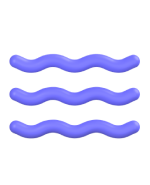
Waves (PHY17)
Total # of live classes: 9
There are different types of waves but all waves are due to vibrations. Water and Sound waves are due to vibrations of layers of particles in their media.

Electric Field III (PHY18)
Total # of live classes: 9
Electrolysis is the process of using electric current to cause a chemical reaction to occur. In this reaction, bonds are broken to release positively charged and negatively charged ions.

Magnetic and Electric Fields (PHY19)
Total # of live classes: 9
Electric field can be described as a physical field that surrounds electrically-charged particles and exerts force on all other charged particles in the field, either attracting or repelling them.

Simple Alternating Circuits (PHY21)
Total # of live classes: 3
Alternating circuits are powered by alternating current or voltage. This means the value of either the voltage or the current varies about a particular mean value and reverses direction periodically.

Simple Alternating Circuits (PHY21)
Total # of live classes: 9
Alternating circuits are powered by alternating current or voltage. This means the value of either the voltage or the current varies about a particular mean value and reverses direction periodically.
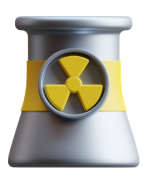
Nucleus, Radioactivity and Nuclear Reactions (PHY22)
Total # of live classes: 9
Radioactivity is the spontaneous decay of the nucleus of the atoms of an element during which a-particles, ß-particles, and y-rays and energy are emitted.
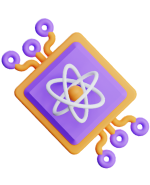
Energy Quantization (PHY23)
Total # of live classes: 9
Electrons in atoms exist in discrete or quantized energy states. Quantized energy means that the electrons can possess only certain discrete energy values; values between those quantized values are not permitted.

Wave-Particle Paradox (PHY24)
Total # of live classes: 9
Wave particle paradox explains the concept that some matter can either behave as a wave or a particle. At the end of this module, among other things, students will gain very good understanding of wave nature of matter, Compton effect, uncertainty principle, electron diffraction experiments, particle nature of matter, calculation on uncertainty, photoelectric effect, and wave particle duality
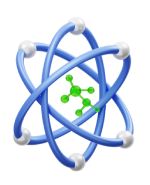
Nuclear Physics II (PHY25)
Total # of live classes: 9
Nuclear physics helps to understand the nature of unstable substances that release radiation as they go through decay. These substances are called Radioisotopes.
 +234 915 886 8888
+234 915 886 8888